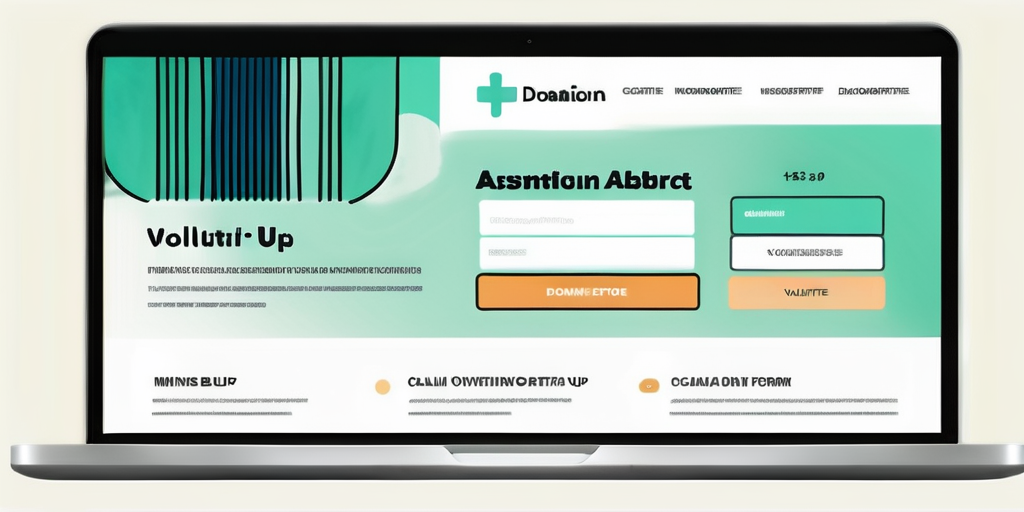Table of Contents
In today’s digital world, having an effective website is crucial for any nonprofit organization. A well-designed website can communicate your mission, engage supporters, and drive donations. This article will explore the key strategies that can help you create the best nonprofit website for your organization.
Critical Elements for Effective Nonprofit Website Design
When it comes to designing a nonprofit website, there are several key elements that you should consider. One of the most critical aspects is visual appeal. Your website should have an attractive, professional design reflecting your organization’s brand and values.
Additionally, the navigation of your website should be user-friendly and intuitive. Visitors should be able to easily find the information they seek without getting lost in a sea of pages and links. Transparent menus, dropdowns, and search functionality can significantly enhance the user experience.
Another crucial element to consider in nonprofit website design is the inclusion of impactful storytelling. By incorporating compelling stories, testimonials, and visuals, you can effectively communicate your organization’s mission and impact to visitors. This emotional connection can inspire support and engagement from your audience.
Furthermore, it is essential to optimize your website for mobile devices. With the increasing use of smartphones and tablets, ensuring that your site is responsive and mobile-friendly is key to reaching a wider audience and providing a seamless browsing experience across different devices.
Utilizing Compelling Storytelling on Nonprofit Websites
Storytelling is a powerful tool that can make your nonprofit website stand out. You can create an emotional connection with your visitors by sharing compelling stories of the people or communities your organization serves. Use engaging narratives, impactful images, and videos to bring these stories to life.
Furthermore, it is essential to highlight the impact of your organization’s work. Display statistics, testimonials, and case studies to demonstrate the results of your efforts. You can build trust and credibility with potential donors and supporters by showcasing your success stories.
When crafting stories for your nonprofit website, consider incorporating elements that evoke empathy and compassion. Personal anecdotes and real-life examples can help donors understand the challenges faced by those your organization aims to help. By vividly portraying the struggles and triumphs of individuals within the community, you can inspire action and support for your cause.
In addition to storytelling, interactive features such as donation progress trackers and live chat support can enhance user engagement on your website. These tools provide visitors with a sense of transparency and immediacy, allowing them to see the impact of their contributions in real time and connect with your team for any inquiries or assistance they may need. By fostering a sense of community and involvement, you can cultivate long-lasting relationships with your audience and foster a culture of giving and support.
Maximizing Online Donation Opportunities
In today’s digital age, providing online donation opportunities on your nonprofit website is essential. Make it easy for visitors to support your cause by prominently displaying donation buttons and providing secure and convenient payment options.
Consider offering different giving methods, such as one-time donations, monthly giving programs, or tribute gifts. Provide clear and compelling reasons why visitors should donate and show how their contributions can make a difference.
Furthermore, engaging with your donors and keeping them informed about the impact of their contributions is crucial. Sending personalized thank-you messages, sharing success stories, and providing updates on how their donations are utilized can help build trust and loyalty among your supporters.
Another effective strategy is to create fundraising campaigns that tap into the power of social media and peer-to-peer fundraising. Encourage your donors to share their giving stories online, set up fundraising pages on behalf of your organization, and challenge their friends and family to donate as well. This expands your donor network and creates a sense of community around your cause.
- Use impactful visuals to highlight the impact of donations.
- Showcase specific funding needs and goals.
- Offer options for recurring donations to encourage long-term support.
Importance of Mobile Responsiveness in Nonprofit Websites
Mobile devices have become the primary means of internet access for many people. Therefore, ensuring that your nonprofit website is mobile-friendly and responsive is crucial.

A responsive design adapts to different screen sizes and resolutions, providing an optimal viewing experience across devices. This means your website will look great and function seamlessly on smartphones, tablets, and desktop computers.
Mobile responsiveness is not only important for user experience but also for search engine optimization (SEO). Search engines like Google prioritize mobile-friendly websites in their rankings, resulting in higher visibility for your organization.
Moreover, having a mobile-responsive nonprofit website can significantly impact your fundraising efforts. With more and more donors using their smartphones to make donations, having a website that is easy to navigate and donate on mobile devices can increase donations and support for your cause.
Additionally, mobile responsiveness can enhance your nonprofit’s credibility and reputation. A website not optimized for mobile devices may appear outdated and unprofessional, potentially turning away potential donors and volunteers.
Investing in mobile responsiveness for your nonprofit website improves the user experience and visibility and demonstrates your organization’s commitment to staying current and accessible in today’s digital world.
Implementing SEO Strategies for Increased Visibility
Search engine optimization (SEO) improves your website’s visibility in search engine results. By implementing SEO strategies, you can increase organic traffic to your nonprofit website and attract more potential supporters.
Start by conducting keyword research to identify the terms and phrases that your target audience is searching for. Incorporate these keywords throughout your website’s content, including headings, subheadings, and body text.
Optimize your meta tags, alt tags for images, and URLs to make them more search engine friendly. Regularly updating your website with relevant content can boost its search engine ranking.
Another crucial aspect of SEO is building high-quality backlinks from reputable websites. Backlinks are links from other sites that direct traffic to your website. Search engines view backlinks as a vote of confidence in your site’s credibility and authority.
Creating a sitemap for your website can help search engine crawlers navigate and index your site more effectively. A well-structured sitemap provides a roadmap of your website’s content, ensuring search engines quickly discover all pages.
Harnessing the Power of Social Media Integration
Social media platforms are powerful tools for nonprofit organizations to reach a wider audience and engage with supporters. Integrating social media accounts into your website can amplify your online presence and drive traffic.

Include social media buttons and sharing options on your website to encourage visitors to follow your organization and share your content. Display live social media feeds or testimonials on your website to demonstrate real-time engagement.
Furthermore, consider embedding social media plugins or widgets that allow visitors to interact directly with your organization’s social media accounts without leaving your website.
Another effective way to harness the power of social media integration is to create interactive campaigns that encourage user participation. For example, you can run contests or polls on social media that drive traffic back to your website. Integrating these campaigns into your site can create a seamless user experience, increasing engagement and brand awareness.
Additionally, leveraging social media analytics tools can provide valuable insights into your audience’s behavior and preferences. You can optimize your social media integration strategy to better resonate with your target audience by tracking engagement rates, click-through rates, and demographics. This data-driven approach can help you tailor your content and messaging to maximize impact and drive meaningful interactions with your supporters.
Creating Impactful Calls-to-Action on Nonprofit Websites
A call-to-action (CTA) prompt encourages visitors to take a specific action, such as donating, signing up for a newsletter, or volunteering. An effective nonprofit website should strategically place clear and compelling CTAs throughout its pages.

Make your CTAs visually appealing and use persuasive language to inspire action. Clearly state the benefits and outcomes of taking the desired action and emphasize the urgency or time-sensitive nature of the request.
Test different CTAs and their placements to determine what resonates most with your audience. Monitor the performance of your CTAs through analytics and optimize them based on the data collected.
Evaluating Analytics to Optimize Nonprofit Website Performance
Analytics provide valuable insights into how your nonprofit website performs and how visitors engage with your content. By regularly evaluating analytics data, you can identify areas for improvement and make data-driven decisions.
Set up analytics tracking tools like Google Analytics to monitor website traffic, user behavior, and conversion rates. Pay attention to metrics such as bounce rate, average session duration, and goal completions to gauge the effectiveness of your website.
Use the data collected to make informed decisions about website optimization, content strategy, and user experience enhancements. Continuously monitor and analyze your website’s performance to ensure it effectively achieves your organization’s goals.
In conclusion, implementing the best nonprofit website strategies can significantly impact your organization’s online presence and success. By focusing on design, storytelling, donation opportunities, mobile responsiveness, SEO, social media integration, impactful CTAs, and analytics evaluation, you can create a compelling online platform for your nonprofit. Stay up-to-date with the latest trends and technologies to enhance your website and engage your supporters meaningfully.



